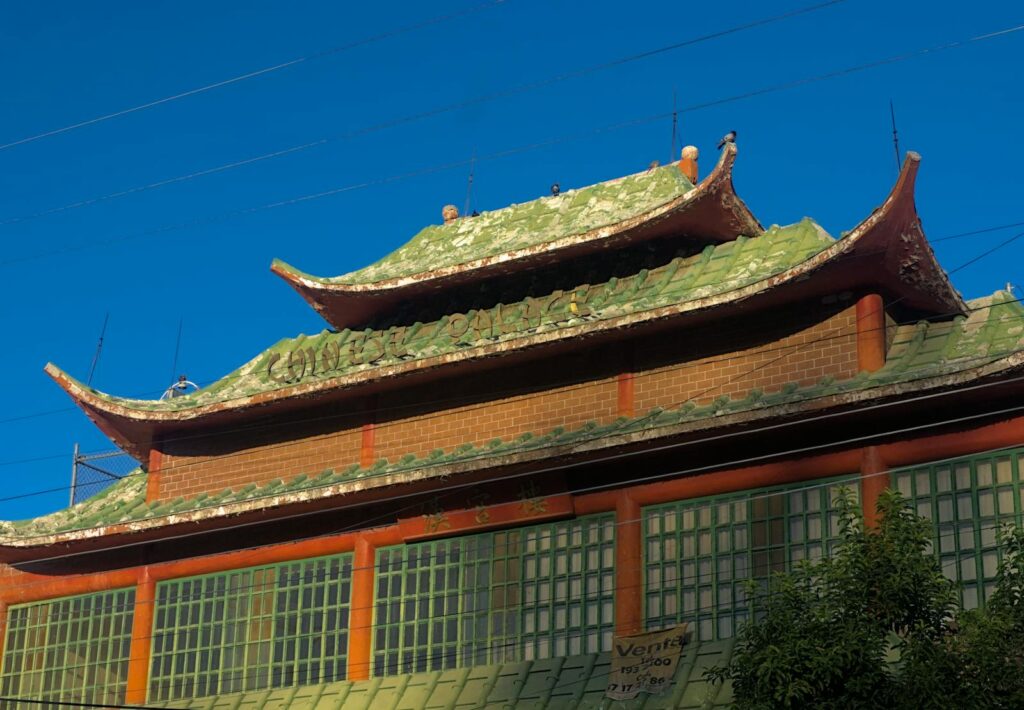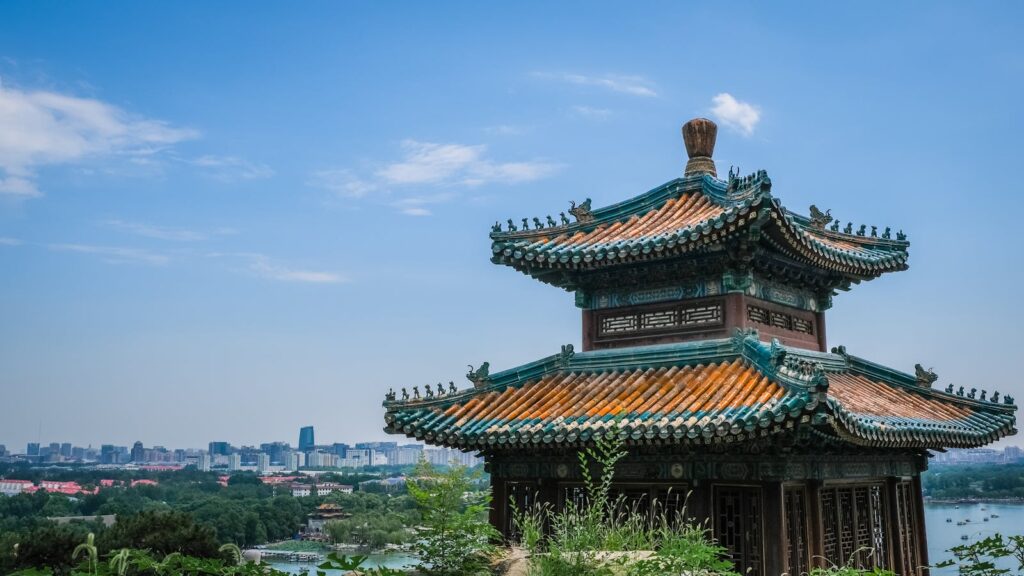The Cold Palace, a mysterious section of the Forbidden City, offers a fascinating glimpse into the darker aspects of imperial life in China. While the Forbidden City is renowned for its opulence and served as the residence for 24 Ming and Qing emperors, the Cold Palace reveals a contrasting narrative, primarily associated with consorts who fell out of favor. Its historical significance lies in the complexities of court politics and the fate of these individuals, contributing to the Palace’s overall mystique. Consequently, the Cold Palace remains closed to the public, preserving its somber legacy amidst the grandeur of its surroundings.

The Cold Palace is a symbol of the transient nature of power and favor.
The essence of the Cold Palace lies in its somber role in imperial history. Unlike the opulent halls where favored concubines resided, the Cold Palace served as a refuge for those who had fallen from grace. These women, once integral to the emperor’s court, often faced a life of isolation and neglect. Over the years, the palace itself became a physical representation of their diminished status, falling into disrepair as the court’s attention shifted to more favored consorts.
This historical neglect reflects a broader theme in Chinese history where the status of individuals, especially women in the imperial system, was closely tied to their favor in the eyes of the ruling power. The Cold Palace, therefore, is not only a historical location but also a narrative of the lives of those who inhabited it. It can be viewed as a poignant symbol of the transient nature of power and favor within the confines of the imperial court, highlighting the impermanence of status and influence.
Alongside historical context, practical considerations also play a significant role in the Cold Palace’s current status. The palace is not just lacking in the luxurious artifacts typically associated with the grandeur of the Forbidden City. Over time, the area has suffered from a lack of maintenance, which has resulted in significant decay. The Chinese government faces the dual challenge of preserving these ancient structures while ensuring the safety of potential visitors. Without the necessary funds for restoration, the Cold Palace has been relegated to a state of abandonment.
The Cold Palace is not valuable enough to be considered as a tourist attraction.
Furthermore, the absence of valuable cultural relics in the Cold Palace diminishes its appeal as a tourist attraction. Unlike other areas of the Forbidden City, which are adorned with exquisite artifacts and historical treasures, the Cold Palace lacks these elements that draw visitors in. This absence aligns with the perception of the Cold Palace as a place of loss rather than one of celebration, reinforcing its image as a symbol of abandonment and neglect.
The idea that the Cold Palace is steeped in ‘yinqi’ or negative energy is a popular belief among many. This belief is rooted in traditional Chinese cultural notions that link certain locations with spiritual energies. However, the true reasons for the Cold Palace’s inaccessibility are far more practical and grounded in historical significance. The safety of visitors, combined with the realities of restoration and maintenance, plays a crucial role in the decision to keep the Cold Palace closed to the public.
In essence, the Cold Palace serves as a reminder of the complexities of imperial life, where power dynamics led to the rise and fall of individuals. It is a place that embodies loss, neglect, and the passage of time, standing in stark contrast to the vibrant history of the rest of the Forbidden City. The juxtaposition of grandiosity and decay is a narrative that speaks volumes about the lives of those who once walked its halls.
Thus, the Cold Palace remains a hidden chapter in the broader story of the Forbidden City, inviting curiosity and wonder while also evoking a sense of compassion for those who were once part of its narrative. The interplay of history, cultural significance, and practical constraints creates a rich tapestry that defines this enigmatic location and shapes our understanding of why it remains closed to the public. As we explore the stories and lives connected to the Cold Palace, we uncover layers of meaning that invite us to reflect on the past and the complexities of human relationships within the imperial court.
The Cold Palace of the Forbidden City stands as a testament to the intricate weave of history and culture, embodying the narratives of those who have been forgotten. The reasons for its inaccessibility are multifaceted, combining historical neglect, practical safety concerns, and the absence of cultural treasures. While the palace may remain closed, its stories continue to resonate, offering a glimpse into the shadows of imperial life and the lives that unfolded behind its walls.
The Cold Palace’s fascinating history doesn’t just end with its physical conditions; it also delves deeply into the socio-political landscape of its time. To fully understand why this particular area of the Forbidden City remains closed to the public, one must explore the interplay of culture, historical significance, and practical challenges.
The Cold Palace is closed due to realistic and historical factors.
One of the most compelling reasons for the Cold Palace’s inaccessibility is rooted in its historical context. The very essence of the Cold Palace is intertwined with the stories of the women who resided there—concubines who fell from imperial favor. These women were once at the center of a complex social hierarchy, and their lives were intricately tied to the whims of the emperor’s affections. When a concubine lost favor, her world dramatically changed; she was relocated to the Cold Palace, a place symbolizing her fall from grace. The Cold Palace thus stands as a remembrance of the ephemeral nature of power and the stark reality of abandonment, resonating with the stories of loss and neglect that reflect the broader societal norms regarding women in imperial China.
In addition to its historical significance, there are practical factors that contribute to the Cold Palace’s closure. Over the years, the palace has suffered from a lack of maintenance. The structures have deteriorated, leading to concerns about safety. The Chinese government is faced with the challenge of balancing preservation with public safety. As captivating as the Cold Palace’s story is, presenting it in a state of disrepair would not only compromise the visitor experience but also pose hazards. This reality makes the decision to keep the Cold Palace closed a prudent choice.
Preservation of historical sites is a significant challenge worldwide, but the case of the Cold Palace is particularly nuanced. The lack of funding for restoration exacerbates the situation. In many ways, the Cold Palace can be viewed as a microcosm of the challenges facing many cultural heritage sites today. Without adequate resources, the delicate task of restoring and maintaining such a culturally rich site becomes nearly impossible. This situation is further complicated by the absence of priceless artifacts within its walls, which diminishes its allure as a tourist destination. Unlike other areas of the Forbidden City, which are brimming with exquisite relics and artifacts, the Cold Palace lacks the treasures that typically draw visitors.
The belief that the Cold Palace is permeated with ‘yinqi’ or negative energy contributes another layer to its inaccessibility. This notion is deeply rooted in traditional Chinese cultural beliefs, linking certain locations to spiritual energies. However, the reality is that practical concerns and historical narratives overshadow these superstitions. The Cold Palace serves as a reminder of the court’s darker aspects, embodying themes of loss, neglect, and the passage of time.
One cannot overlook the broader implications of the Cold Palace’s closure on public perception and historical understanding. By keeping the Cold Palace under wraps, we also limit the opportunity for education and reflection on the lives of those women who once lived there. It offers a poignant glimpse into a chapter of Chinese history that is often overshadowed by the grandeur of the Forbidden City and the triumphs of imperial rule. The stories encapsulated in the Cold Palace deserve to be told, to spark curiosity and provide insight into a segment of history that reflects the complexities of human relationships and the societal norms of the time.

While the Cold Palace remains a hidden gem within the Forbidden City, it doesn’t have to remain a mystery. Activating narratives around its history, its residents, and the socio-political dynamics of the time could transform how we engage with this space. Perhaps a renewed focus on education and storytelling could eventually pave the way for a more inclusive approach to the Cold Palace, allowing it to become a place of learning rather than mere seclusion.
In the grand tapestry of Chinese history, the Cold Palace is a reminder of the complexities that lie beneath the surface of power and prestige. It reflects a time when the lives of women were intricately tied to the whims of the emperor, and their stories deserve a place in the narrative of the Forbidden City. As we ponder the reasons for its inaccessibility, we also contemplate the potential for future reconciliation with its past. The Cold Palace, in its silence, continues to speak volumes, inviting us to listen closely and reflect on the legacies of those who once navigated its corridors. Through understanding and appreciation, we may find ways to bridge the gap between past and present, illuminating forgotten stories and contributing to a more comprehensive understanding of the imperial era.
Ultimately, the Cold Palace is a testament to the intricate weave of history and culture, standing as a symbol of forgotten narratives. By acknowledging its significance, we foster a deeper appreciation for the complexities of imperial life and the realities faced by those who inhabited these walls. Whether through preservation efforts or educational initiatives, the Cold Palace holds the potential to emerge from the shadows, inviting us to explore its history and the lives intertwined with its existence, enriching our understanding of the Forbidden City as a whole.
As we continue to engage with the stories tied to the Cold Palace, we embrace a narrative that reflects the multifaceted nature of human experience. By bringing these stories to light, we not only honor the past but also allow for a richer cultural dialogue that transcends time and geography. The Cold Palace may be closed, but its history is alive, waiting to be discovered, shared, and understood in new and meaningful ways, offering a deeper connection to our shared human heritage.
The Cold Palace serves as an intriguing yet often overlooked facet of the Forbidden City, stirring both curiosity and empathy for those whose lives unfolded within its walls. This site embodies a rich interplay of historical significance and cultural nuance, which contributes to its ongoing inaccessibility to the public. As we delve into the narratives linked to the Cold Palace, we uncover profound insights into the complexities of human relationships within the imperial court. Beyond being merely a historical artifact, the Cold Palace stands as a poignant reflection on love, loss, and the passage of time, preserving the echoes of those who inhabited its space and the stories that merit our attention.
Related posts:
China’s Forbidden City: 10 Things You Need to Know
Forbidden City at 600: How China’s imperial palace survived against the odds
Forbidden City



